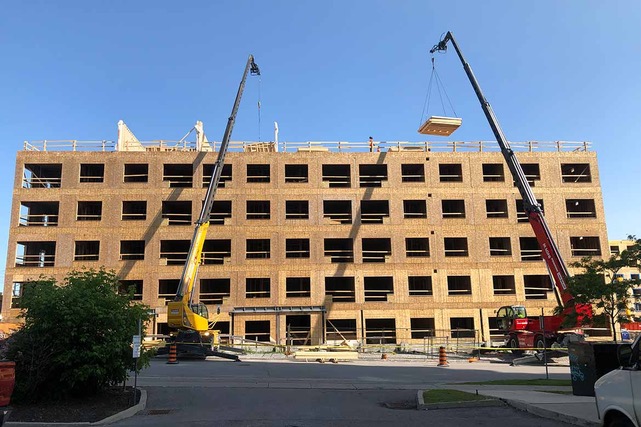Submitted by Mike Phillips, Ontario Structural Wood Association
In recent years, a growing number of reports and policy papers have proposed solutions to address Ontario’s short- and medium-term housing needs. Many of these reports — produced by governments, builders and industry groups — point to off-site prefabrication as a key part of the solution.
The Ontario Structural Wood Association (OSWA) believes there is already a cost-effective, immediate solution: using the existing capacity of the light wood framing (LWF) industry. What the industry needs is not more infrastructure, but a clear signal in the form of orders — and a commitment that those orders will continue, to support investments in manufacturing platforms. With that assurance, we can build what is needed.
To demonstrate that Ontario already has this production capacity, OSWA conducted a survey of the LWF industry in spring 2025, with a particular focus on panel manufacturing. While trusses and engineered wood products (EWPs) are already widely used, panels — the final step in moving away from stick-built construction — remain the least adopted off-site component.
Our research identified about 40 companies across the province that currently have the capacity to deliver wood panels to construction sites. About half of them responded to the survey. We asked: What is your current production capacity using existing equipment, with a full staff on a single weekday shift?
Using a modest 1,500 sq. ft. home as a benchmark, the respondents indicated they could collectively produce panels for about 12,000 housing units per year — without any new investment. Extrapolated to the full industry, this number could easily double to 24,000 homes annually. This existing capacity can also be increased relatively easily, with additional shifts and minor upgrades.
The industry comprises a handful of large, often automated manufacturers; a mid-sized group with full-time operations and moderate automation; and a larger number of smaller shops poised to scale up in response to demand. Collectively, these companies are capable of producing wall panels, floor cassettes, roof cassettes, and, in some cases, complete modular homes.
Projects range from single-family homes to four- to six-storey mid-rises. Most can produce open panels, and about half also build closed panels. Roughly 50 per cent are CSA A277 certified or are working toward certification.
OSWA’s 100-plus members are experts in off-site wood component manufacturing. Roof trusses, floor trusses, and EWPs have long been industry mainstays, but today the entire structure of a wood building can be prefabricated off-site and assembled on location. Whether using flat-pack delivery or modular/volumetric methods, this approach offers several key advantages over traditional stick-built construction.
These advantages include shorter build times, less material waste, reduced labour requirements, and better project coordination — all of which help control costs. While many industries have embraced efficiency improvements over the past few decades, construction has been slow to adapt. It’s time for that to change.
Prefabrication is especially well suited to the larger multi-unit projects Ontario needs to address the housing affordability crisis. The off-site light wood frame industry is ready and able to deliver. Yet, it remains underestimated and underutilized.
We are a strong and viable part of the solution — and we’re ready to build the homes Ontario needs now. Call us, and we will deliver.
Mike Phillips is the OSWA’s executive director.





